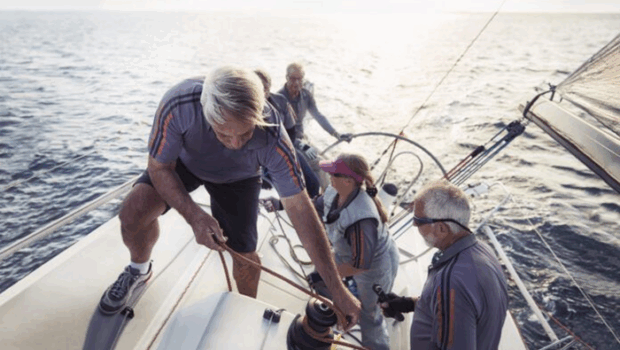When a passenger falls overboard, quick and methodical action is crucial to ensure their safe return to the vessel. Understanding how should a falls overboard passenger be pulled back onto the boat can make the difference in an emergency. This process involves alerting the crew, maneuvering the craft, and using appropriate techniques to retrieve the individual without causing further harm.
The first step is immediate notification. Anyone witnessing the incident should shout “man overboard” loudly to alert everyone on board. This triggers a coordinated response, with one person designated to keep visual contact with the victim at all times. Pointing continuously helps the operator locate them amid waves or distance.
Next, throw flotation devices promptly. A life ring, cushion, or any buoyant item can keep the person afloat while the boat turns around. If equipped with a Lifesling or similar, deploy it to create a connection. This buys time and provides support, especially if the individual is injured or fatigued.
Maneuvering the vessel requires precision. The operator should execute a quick turn, such as the Williamson or quick-stop method, to circle back efficiently. Approach from downwind to use the boat as a windbreak, reducing drift. Slow to idle as you near to avoid propeller risks.
Once alongside, assess the situation. If the person is conscious and able, use a boarding ladder or platform for self-recovery. For those needing assistance, a looped line or harness allows pulling without straining. Avoid lifting by arms to prevent shoulder injuries; instead, use under the armpits or a sling around the torso.
In cases where the victim is unconscious, more advanced methods apply. A parbuckle or net can roll them aboard, or multiple crew members can lift together. Practice these in drills to build efficiency.
Safety gear enhances success. Ensure life jackets are worn, as they keep heads above water. Harnesses tethered to the boat prevent falls in rough conditions, but if overboard, cut lines if entangled.
Training prepares crews. Courses from organizations like the US Coast Guard teach these protocols, emphasizing calm under pressure. Regular drills simulate scenarios, refining roles and timing.
Vessel type influences techniques. On sailboats, heaving-to stabilizes for recovery. Powerboats offer speed for quick returns but require careful throttling near the victim.
Weather impacts approaches. In high seas, position the boat to block waves, creating a calmer lee side. Cold water accelerates hypothermia, so expedite retrieval and have blankets ready.
Communication tools aid. VHF radios can summon help if needed, broadcasting position via GPS. Flares or whistles signal location if visibility is low.
Post-recovery care is vital. Check for injuries, provide warmth, and monitor for shock. If severe, seek medical attention promptly.
Prevention reduces incidents. Non-slip decks, handrails, and sober operations minimize risks. Brief passengers on safety, encouraging harness use in adverse conditions.
Legal aspects underscore responsibility. Operators must render aid, with failure potentially leading to liability. Knowledge of maritime laws ensures compliance.
Community stories highlight best practices. Accounts from survivors emphasize flotation and quick action’s importance.
Technological advancements assist. MOB buttons on GPS activate alarms and mark positions automatically. Wearable beacons transmit locations to rescuers.
For larger vessels, davits or cranes facilitate lifts, but smaller crafts rely on manual methods.
In groups, assign tasks: one spots, another prepares gear, the operator maneuvers. This division optimizes response.
Children or weak swimmers warrant extra precautions, like constant supervision and fitted vests.
Nighttime falls demand lights. Searchlights illuminate, and glow sticks on jackets aid visibility.
In currents, account for drift when circling back. Calculate based on speed and direction.
Emotional control is key. Panic hinders; training instills confidence.
Documentation post-incident reviews performance, identifying improvements.
Ultimately, knowing how to handle when a passenger falls overboard safeguards lives. Preparation turns potential tragedies into successful rescues.
Exploring methods further, the Lifesling system exemplifies effective tools. It deploys a floating line that encircles the victim, allowing winching aboard without direct pulling.
Boarding ladders should extend below waterline for easy grasp. Foldable models store compactly but deploy quickly.
For solo operators, self-recovery plans are essential, like trailing lines to grab while swimming.
Inflatable ramps or steps assist in higher freeboard boats, providing stable platforms.
Medical knowledge complements, like CPR if breathing stops post-recovery.
Insurance often covers training, incentivizing preparedness.
Forums discuss innovations, sharing user experiences.
In racing, specialized protocols ensure swift actions without race abandonment.
Cruise lines train extensively, with dedicated teams.
Personal anecdotes reinforce lessons, like maintaining contact preventing loss.
Apps simulate drills, enhancing virtual practice.
In conclusion, structured responses when someone falls overboard promote safety. Mastery of these steps empowers confident boating.

 How Should a Falls Overboard Passenger Be Pulled Back Onto the Boat?">
How Should a Falls Overboard Passenger Be Pulled Back Onto the Boat?">
